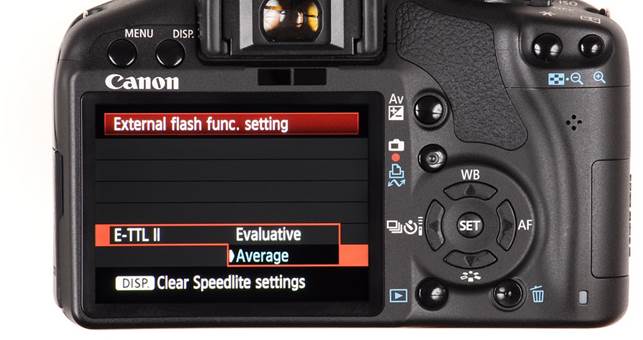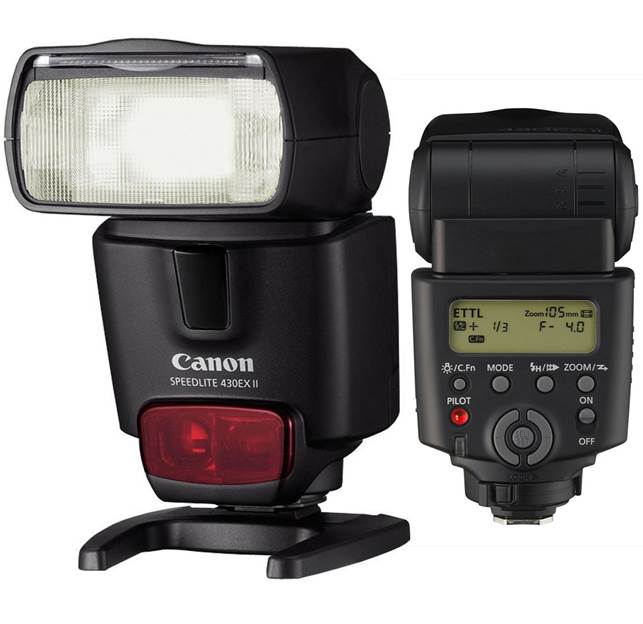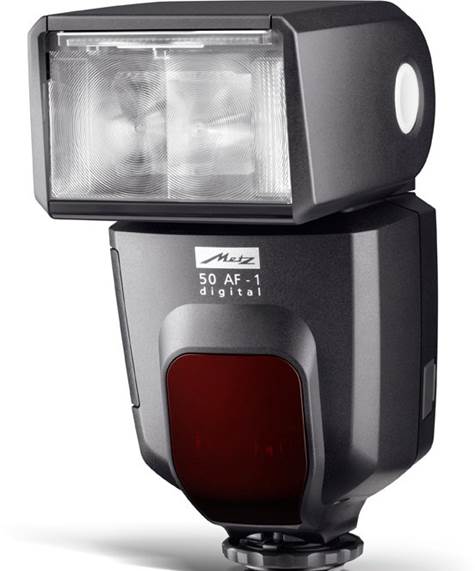There’s more to a good flashgun than its power rating
The single most useful aspect of dedicated flashguns is that
they offer E-TTL (Electronic – Through The Lens) flash metering. A pre-flash
pulse of light is fired, reflected back from the scene and measured by the
camera’s metering system, and the strength of the flash is set accordingly. This
means that, for example, you can zoom in on a subject to fill the central region
of the frame with their face, then press the Flash Exposure Lock button on the
camera to set and lock the flash power. You can now zoom out and recompose, and
the flash power will still be correct.
At least, that’s the theory. In practice, some flashguns can
produce slightly underexposed or overexposed results; if so you’ll need to dial
in some flash exposure compensation and re-shoot. Again, thanks to dedication,
you can apply flash exposure compensation directly from the camera’s Flash
Control menu or Quick menu. When it comes to camera menus, however, some
flashguns are more dedicated than others. For example, all the Canon models on
test enable you to adjust flash modes direct from the Flash Control menu on your
EOS. These can include E-TTL and manual flash modes, as well as sync options for
regular, high-speed sync and rear curtain. The same often can’t be said for
other manufacturer’s flashguns, making the ease of use of onboard controls all
the more important.

You can apply flash
exposure compensation directly from the camera’s Flash Control menu or Quick
menu
While E-TTL is ideal for general shooting, sometimes it pays
to go manual to fine-tune the balance between the ambient light and the power of
the flash. In manual shooting mode, you can set the aperture and shutter speed
to give you the exposure setting you want for the ambient lighting, and then
dial in flash power manually for the best results.
Flashguns can also be used to create fill-in flash on sunny
days, for example to avoid facial shadows in portraits. But when you use flash a
limiting factor is the maximum shutter sync speed of the camera, which is often
1/200 sec, but the HSS (high-speed sync) mode on most flashguns enables you to
use flash at any shutter speed; the only proviso is that, at very fast speeds,
the maximum power of the flash will be limited.
Canon Speedlite 430EX II
Much more of a serious photographer’s flashgun than either of
the other Canon models on test, the 430EX II is well equipped, with
direct-access buttons for switching between E-TTL and manual flash modes,
high-speed sync and rear curtain functions, flash exposure compensation and
more. You always know exactly what’s going on as well, thanks to a backlit LCD
info display on the back.

Canon Speedlite
430EX II
Compared with the other Canon guns there’s more power on
tap, with a rating of Gn 43. Other refinements include a motorised zoom head and
wide-angle diffuser; another neat touch is that the flashgun senses whether the
host camera has a full-frame or APS-C sensor, and adjusts the zoom setting and
info display accordingly.
In wireless slave mode the 430EX II works as flawlessly as
you’d expect of a genuine Canon flashgun, and custom function adjustments are
easy to make, either using the controls on the flashgun itself or via the camera
menu; the latter option is actually better, as it offers supplementary
information about each setting. E-TTL flash metering is spot-on and recycling is
both fast and silent; the lack of annoying whistling used to be a selling point
of the 430EX II, but most competing flashguns have caught up.
|
Verdict
·
Price: $260 ·
For: Advanced settings are intuitive and easy to use; seamless
integration with camera ·
Against: Despite being the most expensive flashgun on test it
doesn’t work as a wireless master
|
Metz Mecablitz 50 AF-1
The Metz has robust build quality and luxuries that include
a bounce and swivel head that can be angled down to -7 degrees, as well as all
the way up to 90 degrees; it can also swivel though 180 degrees to the left or
120 degrees to the right. There’s a motorised zoom from 24-105mm, and the head
features both a flip-down wide-angle diffuser and pull-out reflector card, the
latter of which is omitted on the Canon 430EX II and is good for giving a
catch-light in bounce mode. Wireless slave operation works in all four channels
and three groups.

Metz Mecablitz 50
AF-1
Like the Canon flashguns on test, the Metz has high- speed
sync and rear curtain modes. Better still, the high level of dedication enables
custom functions and settings to be adjusted via the camera’s Flash Control
menu – which is just as well, as the onboard controls aren’t very intuitive.
Unfortunately, the Metz tends to underexpose shots by about two-thirds of a
stop in E-TTL mode, so you’re likely to have to apply positive flash exposure
compensation. The recycling time from a full-power flash is pretty average, at
5.3 seconds.
To ensure compatibility with future Canon cameras, the Metz
features a USB port which you can use to apply firmware updates.
|
Verdict
·
Price: $210 ·
For: Good feature set; very good integration with camera; beefy
Gn 50 power rating ·
Against: Onboard controls can be confusing; consistent
underexposure in E-TTL mode
|